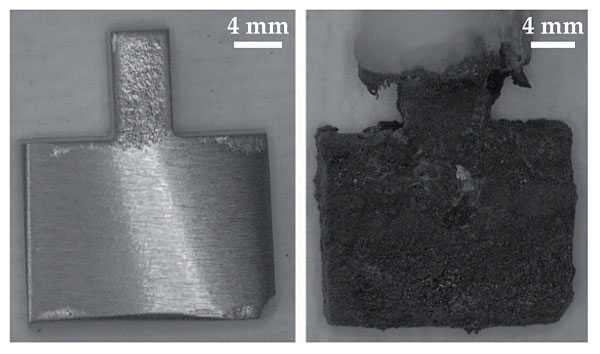Leaner, greener iron and steel
DOI: 10.1063/PT.3.2037
Among the various industrial sectors around the world, iron and steel manufacturing is the second-largest consumer of energy (behind petroleum and chemical processing), according to the International Energy Agency, and the largest emitter of carbon dioxide. The processing of raw iron ore is particularly energy- and CO2-intensive: Carbon is typically added to chemically reduce iron oxide, producing iron and CO2, and excess dissolved carbon is removed by reacting it with oxygen gas. An alternative, lower-energy, carbon-free method for removing oxygen from iron oxide and other ores may now be one step closer: molten oxide electrolysis. As common classroom demonstrations with water show, passing electricity through an oxide can strip water of oxygen at the anode. But in molten iron ore, the anode material must face extremely harsh conditions: reaction temperatures above 1500 °C, a highly corrosive environment, and an oxide that spontaneously reacts with most metals on contact. MIT’s Donald Sadoway and colleagues have now demonstrated that chromium–iron alloys can, at least at the laboratory scale, survive in that environment; moreover, the alloys are efficient and inexpensive. Compared with its initial size and shape (at left), the Cr90Fe10 anode (at right), though covered with electrolyte, showed little change in dimensions after several hours of electrolysis of magnetite, Fe3O4. Key to the alloy’s stability is the formation of a conducting outer layer comprising a solid solution of Cr2O3 and alumina (which the researchers had in the electrolyte). The results present challenges to current theories of oxidation in extreme environments but nevertheless pave the way for assessing the alloys’ performance at larger scales. (A. Allanore, L. Yin, D. R. Sadoway, Nature 497, 353, 2013, doi:10.1038/nature12134


